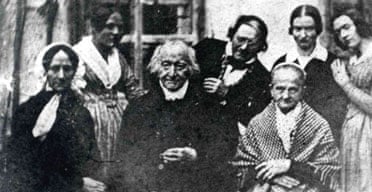Her dark hair severely parted, Constanze Weber Mozart sits unsmilingly, perhaps staring at her feet. Beside her is Max Keller, a Swiss composer and old family friend, surrounded by his daughters and the rest of his family. In the background is a cottage with two windows that face the garden.
The newly discovered black and white image is the only photograph ever taken of Constanze Mozart, the widow of the Austrian composer and genius Wolfgang Amadeus Mozart.
The previously unknown print was discovered in archives in the southern German town of Altötting, local authorities said yesterday, and has been authenticated as including Mrs Mozart.
The long-lost photograph was taken in October 1840, when Constanze Weber was 78, at Max Keller's home. The Altötting state archive said it was believed this was the only time in her life that she had been photographed.
The picture is one of the earliest examples of photography in Bavaria, it said. Daguerrotype photography was first practised in the southern German state around that time.
The photograph of Mozart's widow was not the original but a copy made in the second half of the 19th century, officials added. Mozart married Constanze Weber in 1782. The couple had six children together, though only two of them survived infancy.
After Mozart's death, at the age of just 35 in 1791, Constanze, then 29, found herself having to bring up her young family on her own. She later married a Danish diplomat, Georg Nissen, and they regularly visited Keller at his home in Altötting.
The couple quickly realised Mozart's potential as a lucrative source of income, with Nissen publishing a Mozart biography and ensuring the composer's reputation - and huge body of work - was kept alive throughout the 19th century.
